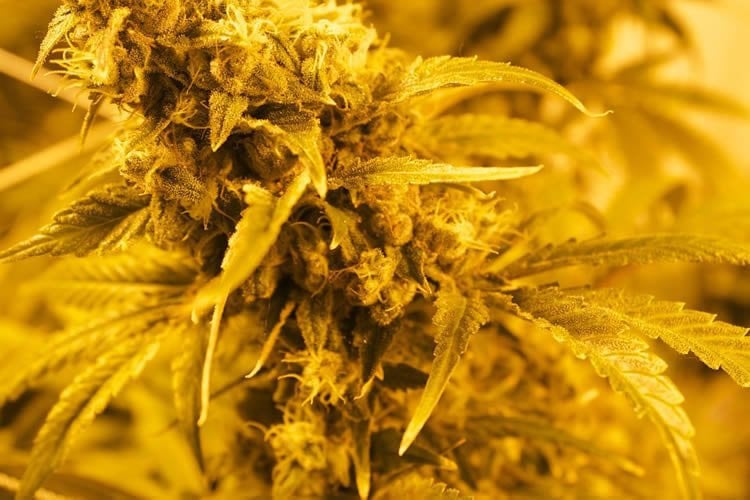Summary: A new study reports teen alcohol and tobacco use has significantly decline recently, with more choosing to use marijuana. Since 2006, researchers say, less than 50% of teens try cigarettes or alcohol before trying cannabis for the first time.
Source: Columbia University.
The “gateway pattern” of adolescent substance use is changing, and marijuana is increasingly the first substance in the sequence of adolescent drug use, according researchers at the Columbia University Mailman School of Public Health. Traditionally, students experiment with cigarettes and alcohol before cannabis, but since 2006, less than 50 percent of adolescents try cigarettes and alcohol before they try cannabis for the first time. The findings are published in the journal Drug and Alcohol Dependence.
“Alcohol and cigarette use have precipitously declined in adolescent populations for 20 years, while marijuana use has not,” said Katherine M. Keyes, PhD, associate professor of Epidemiology at the Columbia Mailman School. “The perceived risk of marijuana use to health among adolescents is declining as well, portending potential future increases. In short, the timing of substances in the ‘gateway’ sequence is changing, as public perceptions about drugs of abuse change.”
The researchers used data from 40 annual surveys of American 12th graders to study historical trends in the average grade of onset of marijuana, alcohol, and cigarette use; the proportion who tried alcohol and/or cigarettes before first marijuana use, and the probability of marijuana use by 12th grade after trying alcohol/cigarettes. A subset of 246,050 students were asked when they first used each substance.

The average school grade during which young people first tried alcohol and cigarettes has increased. The biggest jump was seen for first cigarette, which rose from the average of nearly 8th grade in 1986 to 9th grade in 2016. The proportion of adolescents who used cigarettes in a grade before marijuana substantially declined. In 1995, 75 percent of 12th grade students who tried both cigarettes and marijuana used cigarettes in a grade before marijuana; by 2016, the proportion had fallen to 40 percent. The proportion who reported trying cigarettes in the same grade as marijuana has increased, from 20 percent in 1994 to 32 percent in 2016.
The average grade of first alcohol use edged up as well, from 9th grade in 1976 to midway between 9th and 10th grade in 2016. The percentage of students who tried alcohol before marijuana peaked in 1995, the year in which 69 percent of adolescents reported drinking alcohol in a grade before marijuana use. This proportion fell rapidly by 1999 to 47 percent.
“Reducing adolescent smoking has been a remarkable achievement of the past 20 years,” noted Keyes. “Now, the more prominent role of marijuana in the early stages of drug use sequences and its implications are important to continue tracking. Its increasing use suggests that marijuana is, and will continue to be, a key target of drug use prevention efforts.”
Co-authors are Caroline Rutherford, Columbia Mailman School; and Richard Miech, University of Michigan. The authors declare no conflicts of interest.
Source: Stephanie Berger – Columbia University
Publisher: Organized by NeuroscienceNews.com.
Image Source: NeuroscienceNews.com image is in the public domain.
Original Research: Open access research for “Historical trends in the grade of onset and sequence of cigarette, alcohol, and marijuana use among adolescents from 1976–2016: Implications for “Gateway” patterns in adolescence” by Katherine M. Keyes, Caroline Rutherford, and Richard Miech in Drug and Alcohol Dependence. Published October 24 2019.
doi:10.1016/j.drugalcdep.2018.09.015
[cbtabs][cbtab title=”MLA”]Columbia University”Teens Increasingly Choosing Cannabis Over Tobacco and Alcohol.” NeuroscienceNews. NeuroscienceNews, 19 November 2019.
<https://neurosciencenews.com/teen-cannabis-use-10227/>.[/cbtab][cbtab title=”APA”]Columbia University(2019, November 19). Teens Increasingly Choosing Cannabis Over Tobacco and Alcohol. NeuroscienceNews. Retrieved November 19, 2019 from https://neurosciencenews.com/teen-cannabis-use-10227/[/cbtab][cbtab title=”Chicago”]Columbia University”Teens Increasingly Choosing Cannabis Over Tobacco and Alcohol.” https://neurosciencenews.com/teen-cannabis-use-10227/ (accessed November 19, 2019).[/cbtab][/cbtabs]
Abstract
Historical trends in the grade of onset and sequence of cigarette, alcohol, and marijuana use among adolescents from 1976–2016: Implications for “Gateway” patterns in adolescence
Introduction: In the past decade, marijuana use prevalence among adolescents has remained relatively steady while cigarette and alcohol prevalence has declined. We examined historical trends in: average grade of onset of marijuana, alcohol, and cigarette use by 12th grade; proportion who try alcohol/cigarettes before first marijuana use, among those who use by 12th grade; and conditional probability of marijuana use by 12th grade after trying alcohol/cigarettes.
Methods: Data were drawn from 40 yearly, cross-sectional surveys of 12th grade US adolescents. A subset of students (N = 246,050) were asked when they first used each substance. We reconstructed cohorts of substance use from grade-of-onset to determine sequence of drug use, as well as probability of marijuana use in the same or later grade.
Results: Average grade of first alcohol and cigarette use by 12th grade increased across time; e.g., first cigarette increased from grade 7.9 in 1986 to 9.0 by 2016 (, SE = 0.001, p < 0.01). The proportion of 12th grade adolescents who smoke cigarettes before marijuana fell below 50% in 2006. Each one-year increase was associated with 1.11 times increased odds of first cigarette in a grade after first marijuana (95% C.I. 1.11–1.12). Among those who initiate alcohol/cigarettes prior to marijuana by 12th grade, the probability of subsequent marijuana use is increasing. Conclusion: Marijuana is increasingly the first substance in the sequence of adolescent drug use. Reducing adolescent smoking has been a remarkable achievement of the past 20 years; those who continue to smoke are at higher risk for progression to marijuana use. [divider]Feel free to share this Neuroscience News.[/divider]






